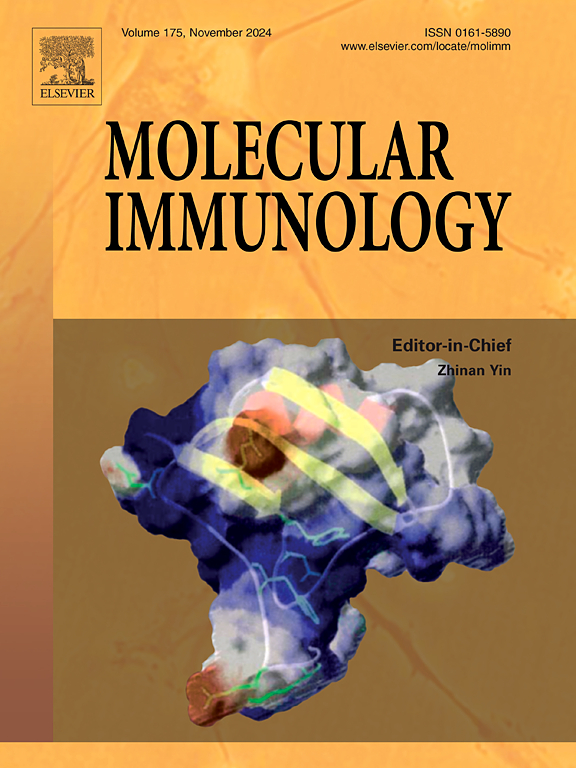Bta-miR-25 alleviates lipopolysaccharide-induced endometritis in cows by targeting DUSP10 to inhibit MAPK signaling
IF 3
3区 医学
Q2 BIOCHEMISTRY & MOLECULAR BIOLOGY
引用次数: 0
Abstract
Bovine endometritis is a common and serious disease that has caused huge economic losses and a decline in production performance in the dairy cattle industry. This study aimed to investigate the regulatory role of bta-miR-25 in Lipopolysaccharide (LPS)-induced BEND and its impact on endometritis. In this study, an in vitro endometritis model was constructed using LPS. The expression levels of proinflammatory cytokines IL-6, IL-8, IL-1β, and TNF-α were significantly increased in the model, while the expression of bta-miR-25 was upregulated, and its target gene DUSP10 was downregulated. We further validated DUSP10 as a target gene of bta-miR-25 through a dual-luciferase reporter gene assay. Knockdown of bta-miR-25 can increase the decreased expression of DUSP10 levels and inhibited the increase in inflammatory factors induced by LPS. Subsequently, overexpression DUSP10 also inhibited the LPS-induced increase in inflammatory factors. In summary, bta-miR-25 can inhibit LPS-induced endometritis by over the expression of DUSP10. bta-miR-25 and DUSP10 may serve as biomarkers and potential therapeutic targets for endometritis in dairy cows.
Bta-miR-25通过靶向DUSP10抑制MAPK信号传导来缓解脂多糖诱导的奶牛子宫内膜炎
牛子宫内膜炎是一种常见的严重疾病,给奶牛行业造成了巨大的经济损失和生产性能下降。本研究旨在探讨bta-miR-25在脂多糖(LPS)诱导的BEND中的调节作用及其对子宫内膜炎的影响。本研究采用LPS构建体外子宫内膜炎模型。模型中促炎因子IL-6、IL-8、IL-1β、TNF-α表达水平显著升高,bta-miR-25表达上调,其靶基因DUSP10表达下调。我们通过双荧光素酶报告基因试验进一步验证了DUSP10是bta-miR-25的靶基因。敲低bta-miR-25可以增加DUSP10的表达水平,抑制LPS诱导的炎症因子的增加。随后,DUSP10的过表达也抑制了lps诱导的炎症因子的增加。综上所述,bta-miR-25可以通过过表达DUSP10抑制lps诱导的子宫内膜炎。bta-miR-25和DUSP10可能作为奶牛子宫内膜炎的生物标志物和潜在的治疗靶点。
本文章由计算机程序翻译,如有差异,请以英文原文为准。
求助全文
约1分钟内获得全文
求助全文
来源期刊

Molecular immunology
医学-免疫学
CiteScore
6.90
自引率
2.80%
发文量
324
审稿时长
50 days
期刊介绍:
Molecular Immunology publishes original articles, reviews and commentaries on all areas of immunology, with a particular focus on description of cellular, biochemical or genetic mechanisms underlying immunological phenomena. Studies on all model organisms, from invertebrates to humans, are suitable. Examples include, but are not restricted to:
Infection, autoimmunity, transplantation, immunodeficiencies, inflammation and tumor immunology
Mechanisms of induction, regulation and termination of innate and adaptive immunity
Intercellular communication, cooperation and regulation
Intracellular mechanisms of immunity (endocytosis, protein trafficking, pathogen recognition, antigen presentation, etc)
Mechanisms of action of the cells and molecules of the immune system
Structural analysis
Development of the immune system
Comparative immunology and evolution of the immune system
"Omics" studies and bioinformatics
Vaccines, biotechnology and therapeutic manipulation of the immune system (therapeutic antibodies, cytokines, cellular therapies, etc)
Technical developments.
 求助内容:
求助内容: 应助结果提醒方式:
应助结果提醒方式:


